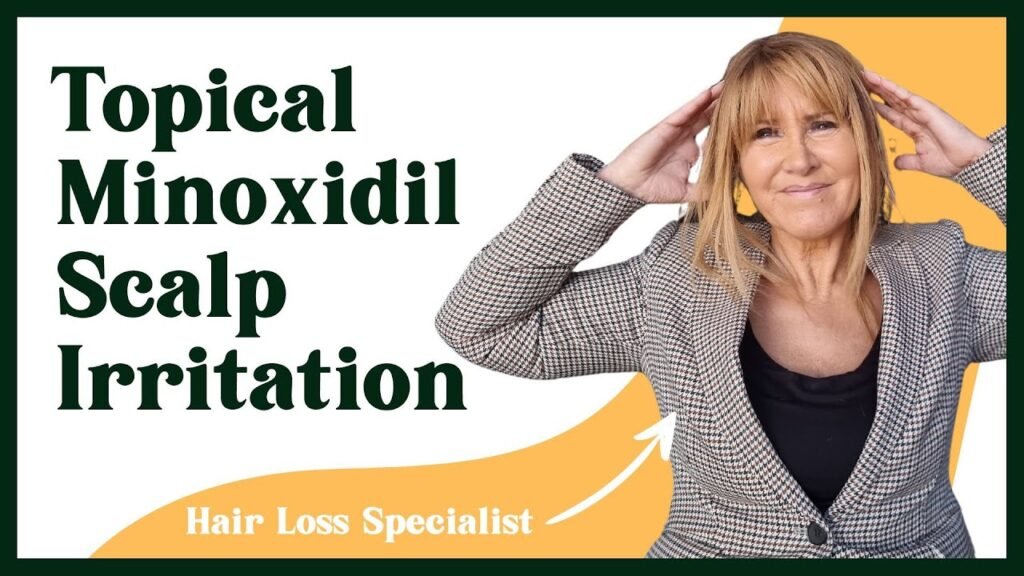Understanding Scalp Redness from Minoxidil: Causes and Symptoms
Minoxidil is a widely-used treatment for hair loss, known for its effectiveness in stimulating hair growth. However, some users experience scalp redness as a side effect. This redness can be attributed to several factors, primarily related to the application and reaction of minoxidil on the scalp. Understanding these causes can help users manage and mitigate the irritation effectively.
One primary cause of scalp redness is the vasodilation effect that minoxidil induces. Minoxidil works by widening blood vessels, which increases blood flow to the hair follicles. While this is beneficial for promoting hair growth, it can also lead to increased skin sensitivity and redness as the blood vessels in the scalp become more pronounced. Additionally, the alcohol or propylene glycol present in many minoxidil formulations can cause dryness or irritation, further contributing to the redness experienced by some users.
The symptoms of scalp redness from minoxidil can vary in intensity and presentation. Common symptoms include a noticeable red or pinkish hue on the scalp, accompanied by a sensation of warmth or mild burning. In some cases, individuals may also experience itching or flaking, which can exacerbate the appearance of redness. These symptoms typically manifest shortly after application and can last for varying durations, depending on the individuals skin sensitivity and the concentration of minoxidil used.
Understanding these causes and symptoms is crucial for those using minoxidil to manage their hair loss. By being aware of how minoxidil interacts with the scalp, users can take proactive steps to minimize irritation, such as adjusting the concentration of the solution, altering application frequency, or using complementary soothing products to reduce redness and discomfort.
Effective Tips for Managing Scalp Redness Caused by Minoxidil
Minoxidil is a popular topical treatment for hair loss, but some users experience scalp redness as a side effect. This condition can be uncomfortable, prompting the need for effective management strategies. One of the first steps in addressing scalp redness is to ensure that you are applying the product correctly. Use only the recommended amount of Minoxidil and apply it to a clean, dry scalp. Over-application can exacerbate irritation, so following the instructions meticulously can help reduce the likelihood of redness.
Consider Using a Moisturizing Scalp Treatment
A dry scalp can contribute to redness and irritation, especially when using Minoxidil. To combat this, incorporate a moisturizing scalp treatment into your routine. Look for products containing soothing ingredients like aloe vera, chamomile, or tea tree oil, which can help calm inflammation and provide relief. Apply the moisturizer after the Minoxidil has fully absorbed into the scalp, ensuring that it does not interfere with the treatments efficacy. Regular use of a moisturizing treatment can help maintain a healthy scalp environment, reducing redness over time.
Patch Test New Products
Before introducing any new products to your hair care routine, especially those used in conjunction with Minoxidil, it’s crucial to perform a patch test. Apply a small amount of the product to a discreet area of the scalp and monitor for any adverse reactions over 24-48 hours. This precautionary step can help you identify potential irritants that could worsen redness. If redness persists despite these measures, consider consulting a healthcare professional to explore alternative treatments or adjustments to your Minoxidil regimen.
Home Remedies to Alleviate Scalp Redness from Minoxidil
Dealing with scalp redness from minoxidil can be uncomfortable, but there are several home remedies that can help soothe the irritation. One effective method is using aloe vera gel, known for its anti-inflammatory and soothing properties. Apply a small amount of pure aloe vera gel directly to the affected area of your scalp. This natural remedy can help reduce redness and calm the skin, providing relief from discomfort. Ensure that the aloe vera is free from added chemicals to avoid further irritation.
Another beneficial home remedy is cold compresses. Applying a cold compress can help reduce inflammation and redness. Wrap a few ice cubes in a clean cloth or use a cold gel pack, and gently press it against the irritated areas of your scalp for several minutes. This simple method can help constrict blood vessels and reduce the sensation of heat and redness, providing immediate soothing relief.
Incorporating chamomile tea rinses into your hair care routine can also be beneficial. Chamomile is known for its calming and anti-inflammatory properties, making it an excellent choice for reducing scalp redness. Brew a strong cup of chamomile tea, let it cool, and then use it as a final rinse after shampooing. Allow the tea to sit on your scalp for a few minutes before rinsing it off with cool water. This can help soothe irritation and promote a healthier scalp environment.
When to Seek Professional Help for Minoxidil-Induced Scalp Redness
Experiencing scalp redness after using minoxidil can be a common side effect, but its important to know when this reaction warrants professional medical attention. If the redness is accompanied by severe itching, swelling, or a burning sensation, it may indicate an allergic reaction or irritation that requires evaluation by a healthcare provider. These symptoms can be signs that your skin is not tolerating the product well, and a professional can help determine whether you should discontinue use or switch to an alternative treatment.
Persistent or worsening redness over several days, despite following the recommended application instructions, is another indicator that its time to consult a dermatologist or healthcare professional. They can assess whether the reaction is a temporary side effect or if it signals a more serious issue. In some cases, continuous irritation can lead to further complications such as infections or scarring, making timely medical advice crucial.
Additionally, if you experience other systemic symptoms such as dizziness, difficulty breathing, or swelling in areas beyond the scalp, these could be signs of a more severe allergic reaction. Immediate medical attention is necessary in these situations to prevent potential complications. Always err on the side of caution and seek professional help if you have any concerns about your reaction to minoxidil.
Preventing Scalp Redness: Best Practices for Minoxidil Users
For individuals using Minoxidil, a common side effect can be scalp redness, which may cause discomfort and concern. To mitigate this, it is crucial to follow certain best practices that ensure both the effectiveness of the treatment and the health of your scalp. Firstly, always apply Minoxidil to a clean, dry scalp. This not only enhances absorption but also reduces the risk of irritation. Ensuring that your scalp is free from dirt, oils, and product buildup can significantly decrease the likelihood of redness.
Another key practice is to use the correct dosage as recommended by your healthcare provider. Over-application can lead to increased irritation and redness, so sticking to the prescribed amount is essential. If you are new to Minoxidil, consider starting with a lower concentration to allow your scalp to adjust, gradually increasing as tolerated. This can help in minimizing any adverse reactions, including redness.
Additionally, incorporating a gentle, hydrating shampoo and conditioner into your routine can soothe and protect the scalp. Look for products that are free from harsh chemicals such as sulfates and parabens, which can exacerbate irritation. Ingredients like aloe vera, chamomile, and tea tree oil are known for their calming properties and can be beneficial in reducing redness. It is also advisable to avoid excessive heat styling and sun exposure, as these can further aggravate the scalp. Regularly moisturizing your scalp with a non-comedogenic, hypoallergenic product can also help maintain its health and resilience against redness.


